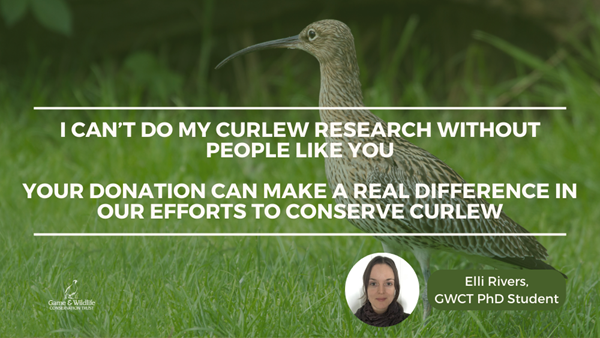
By Elli Rivers, GWCT PhD Student
As I write this the first curlew are returning to their breeding grounds in the UK. We welcome around 25% of the world’s breeding population each spring but without urgent intervention, this beautiful bird may soon become nothing more than a memory.
Since 2000, we have lost half of our resident curlew, they are now considered one of the most pressing conservation priorities in the UK.
With your support, we can change this and ensure a future for curlew.
At the Game & Wildlife Conservation Trust, I’m leading efforts to understand and address the factors driving curlew declines. Through research conducted by our dedicated team, we are gaining invaluable insights into the challenges facing curlews, from habitat loss to predation pressure.
Your donation can make a real difference in our efforts to conserve curlew.
By supporting our appeal, you can help us purchase essential radio and GPS tags, allowing us to track and monitor curlew more effectively. With this data, we can develop targeted conservation strategies to safeguard curlew and their habitats for generations to come.
Please donate today to support our vital research and conservation work. Together, we can ensure that the call of the curlew continues to echo across our landscapes for years to come.